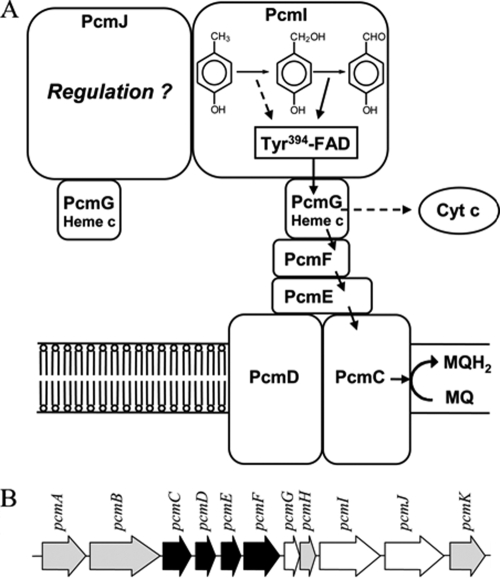FIG. 4.
Model for a putative PCMH/cytochrome bc complex. (A) Proposed alternative electron transfer routes during p-cresol oxidation (dashed line) and p-hydroxybenzyl alcohol oxidation (solid line) are shown. Electrons derived from alcohol oxidation can be transferred to menaquinone, whereas those derived from p-cresol oxidation may be transferred to a periplasmic cytochrome c. Alternatively, the latter could also be transferred to menaquinone by means of energy-driven reversed electron transfer. The areas of the symbolized subunits do not represent the exact relative molecular masses. MQ, menaquinone; MQH2, menaquinol. Cyt c, cytochrome c. (B) Part of the pcm gene cluster. PCMH is encoded by pcmG (β subunit), pcmI (α subunit), and pcmJ (α′ subunit), and the putative cytochrome bc complex is encoded by pcmC (product similar to the N-terminal part of transmembrane cytochrome b), pcmD (product similar to the C-terminal part of transmembrane cytochrome b), pcmE (Rieske protein), and pcmF (cytochrome c). The function of the other putative gene products is unknown.

